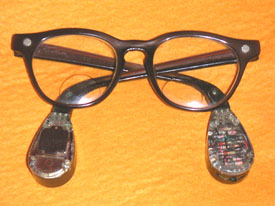05 Feb Part 3 of the Evolution of the Hearing Aid
In Part 2 of this hearing aid history lesson, we watched as hearing aids started to use electrical current to amplify sounds. However, these devices were still large and bulky. In 1948, Bell Laboratories developed the transistor to replace vacuum tubes, which opened many new doors for hearing aid developers. Transistors were small enough to allow for the development of miniature microphones, small enough to be mounted on other items such as eyeglasses.
The excitement over these new, smaller transistor hearing aids mounted quickly; however, the transistor hearing aid did not go under proper testing before hitting the market. It was later discovered that these hearing aids were only lasting a few weeks due to dampness as transistors could not get damp. The first company to overcome this problem was Zenith, who in 1952 came out with the first fully transistor hearing aid called the Microtone Transimatic.
The transmitter era came to an end after the creation of the integrated circuit at Texas Instruments in 1958, and this technique was used in hearing aids over the next two decades.



